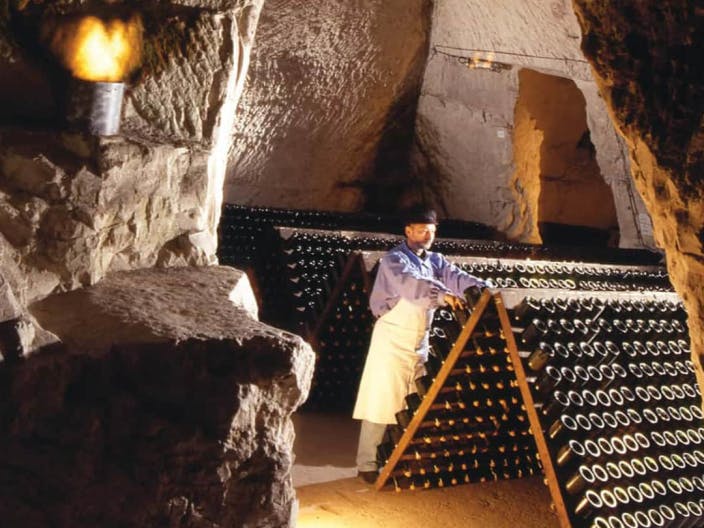In the vineyard
Taittinger owns 288 hectares of vineyards, making them the third largest grower in the region. This accounts for 45% of their requirements, sourcing the remaining grapes from long-term contracts with independent growers. Their vineyards are planted with 37% Chardonnay, 48% Pinot Noir and 15% Pinot Meunier.
All the grapes for Comtes are sourced from Champagne’s Côte des Blancs, a ridge running 30km north to south with east-facing vineyards, predominantly planted to Chardonnay (95%). The fruit is sourced from all five Grand Cru villages in the Côte des Blancs – Avize, Chouilly, Cramant, Mesnil-sur-Oger and Oger, with the main base of the cuvée coming from Taittinger’s house vineyard surrounding the Château de la Marquetterie, just south of Epernay.
In the winery
After every harvest, each wine from the various Cru villages is tasted several times and analysed organoleptically in order for Chef de Cave Alexandre Ponnavoy and his team to predict their ageing and aromatic potential, identifying which cuvée they will be selected for.
Comtes de Champagne’s style has changed over the years, in line with trends across the region and the change in climate. The dosage of Comtes up until the 1980s was much higher – typically 15 to 16 g/litre, now it is closer to 9g/litre.
But global warming does not explain everything: Champagne consumption patterns have changed with a more restrained, fresher, lower-dosage Champagne preferred. And so Taittinger adapted Comtes’s style in line with those needs. Another change came in the late 1980s when Ponnavoy’s predecessor Loïc Dupont re-introduced partial oak-ageing for the Comtes de Champagne.
This wooded component is today an integral part of the Comtes de Champagne profile. Only a tiny proportion of the wine sees oak (between 5-8%) depending on the vintage, but – for Ponnavoy – it is the oak that provides a touch of spice and more importantly helps frame the aromatic concentration and precision required for ageing.
